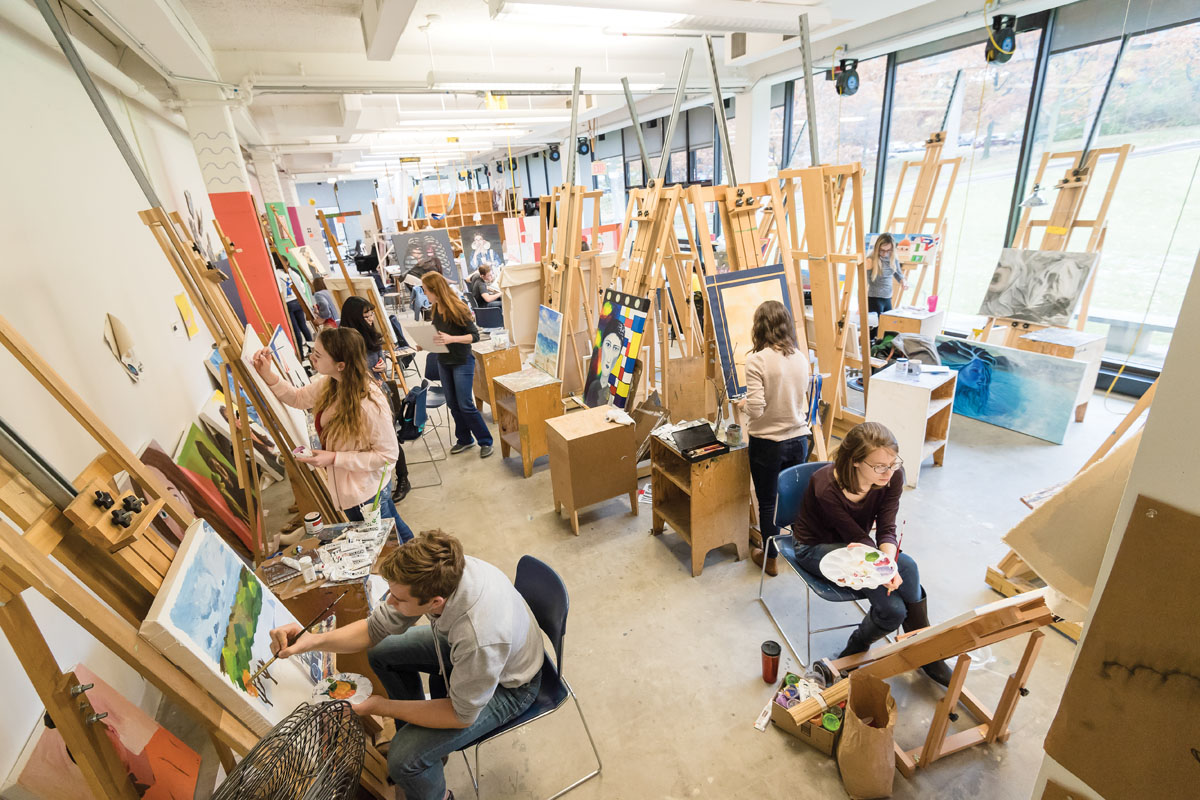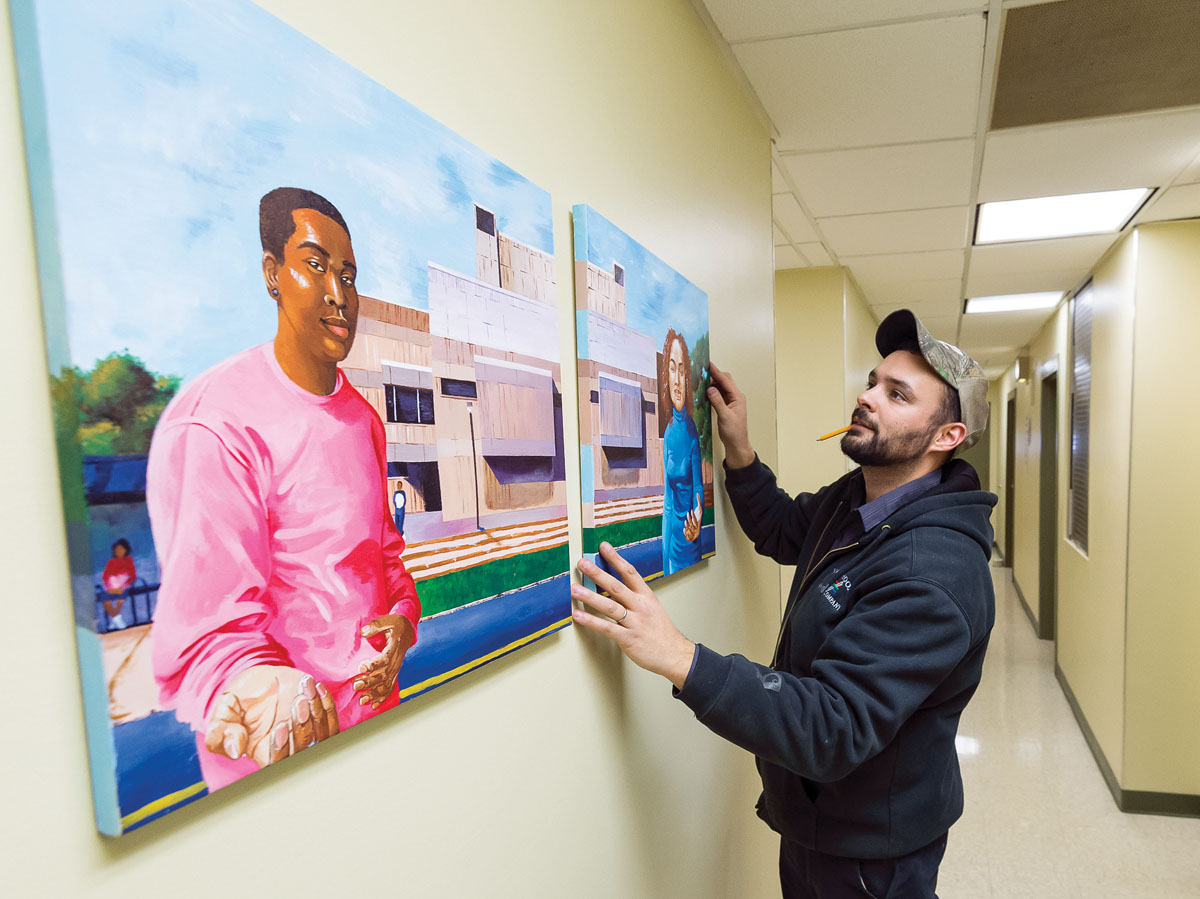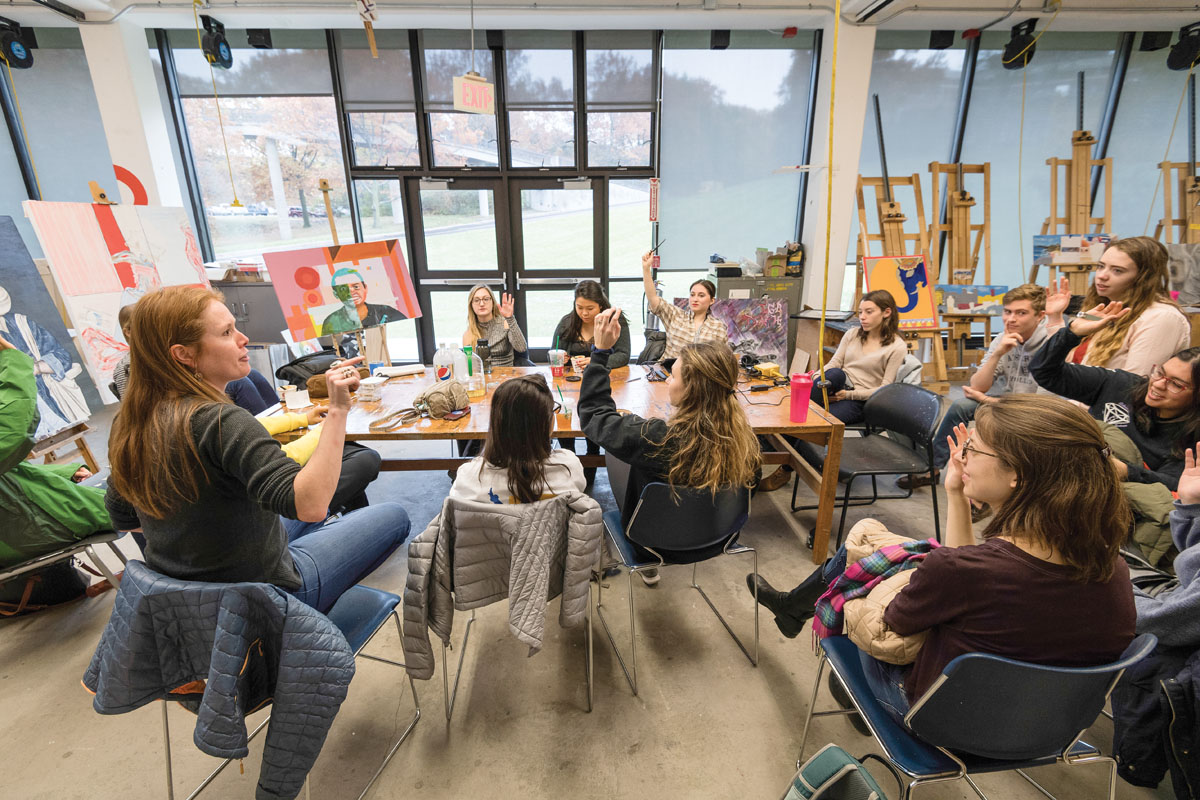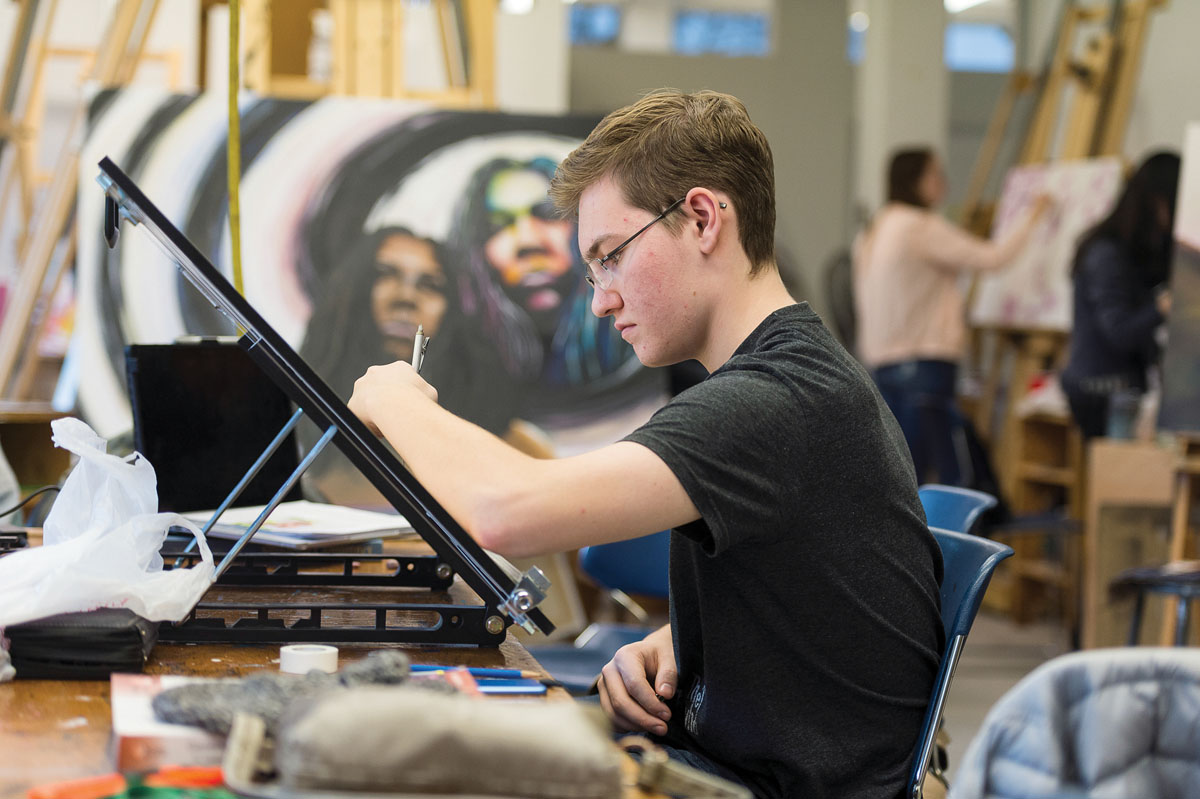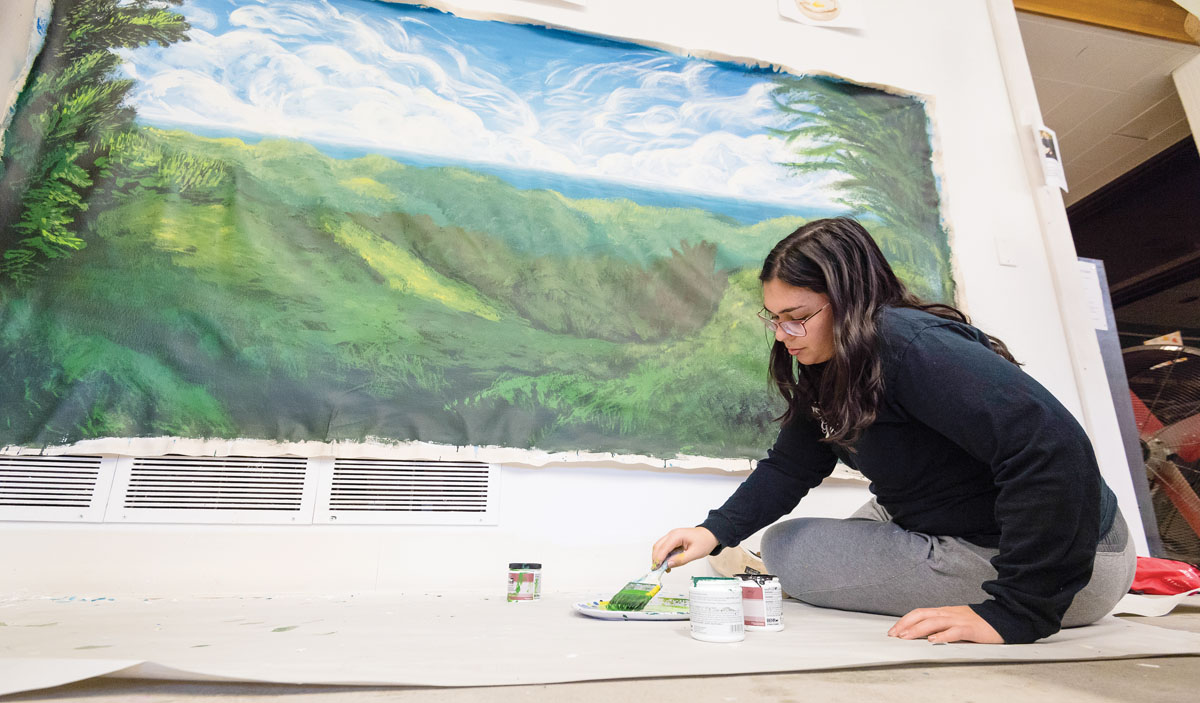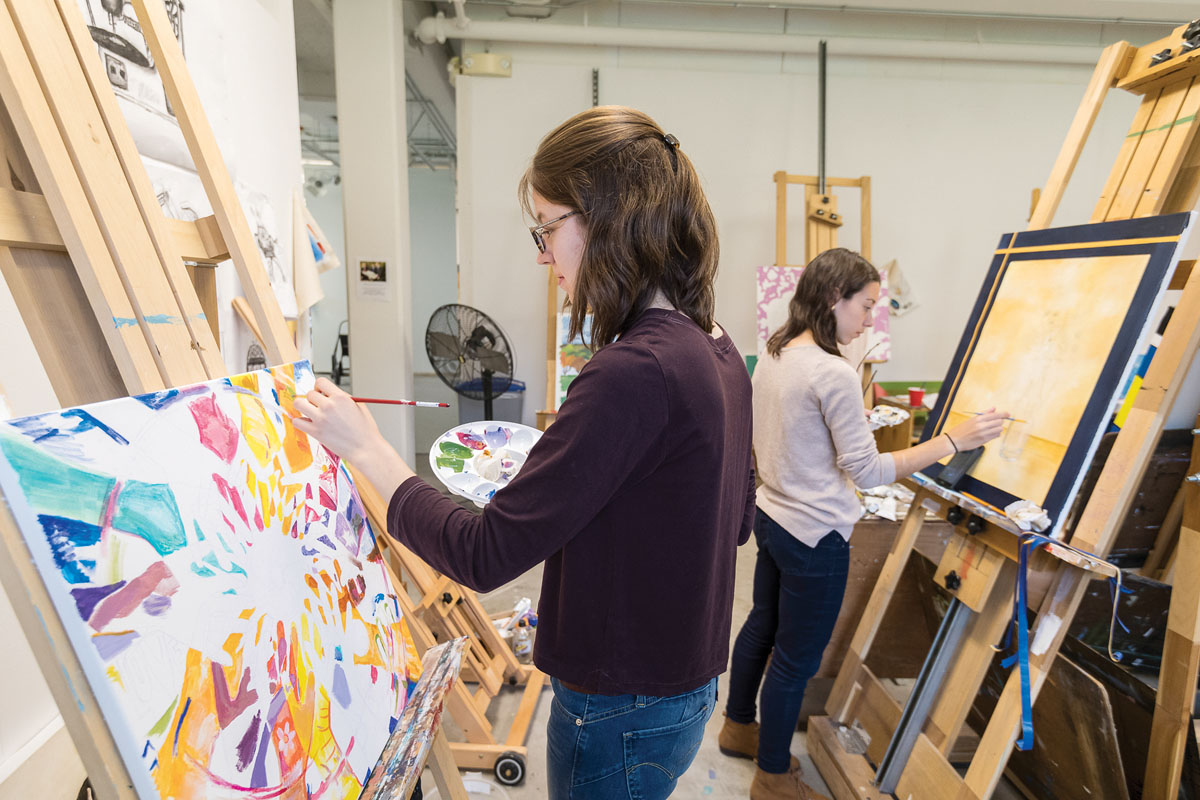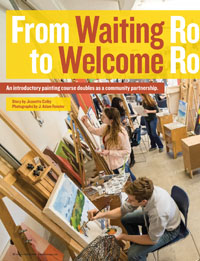Features
Inside the Anthony L. Jordan Health Centers at Brown Square and on Holland Street, in the heart of Rochester neighborhoods marked by high rates of poverty, live groups of polychromatic paintings created specifically for each space and the patients they serve.
The works, adorning waiting rooms, patient rooms, and hallways, were all created by Rochester undergraduates in an introductory painting course taught by Heather Layton, a senior lecturer in the Department of Art and Art History.
Most people who have taken a form of introductory painting, whether as part of a secondary school art class, a college class, or in their communities, can recall the still-life setups, the live models, and the lessons on technique playing out in the studio space, as an instructor circulates the room, offering praise and critique.
Layton’s course—a collaboration between her and the Anthony Jordan Centers, funded with a grant from the Rochester Center for Community Leadership—is something else besides, stretching the potential of what an introductory art class can be.
Layton has made community engagement her course’s centerpiece. “I want our students to learn how to be engaged in a community and to interact with people they may not interact with otherwise,” she says.
In spring 2017, her class helped transform the Brown Square space. This past fall, a new group of students completed a similar project at the facility on Holland Street.
“I saw the art at Brown Square and it was really moving,” says Halley Koehler, the practice manager for family medicine, behavioral health, and urgent care at the center on Holland Street.
At Holland Street, as at Brown Square before, the students began by conversing with center staff. They learned that the imagery would need to reflect the clients, residents of the surrounding neighborhood who are primarily Spanish-speaking. Koehler and others at the clinic also asked the students for art that contributed to the center’s mission to offer a safe environment to the LGBTQ—lesbian, gay, bisexual, transgender, queer—community.
There was a third challenge: the students had to fill a floor on which patients receive a broad range of services, including basic care, mental health, HIV and hepatitis, and a suboxone treatment program.
Everyone would have to feel welcomed.
“There’s a sense of belonging that we’re hoping to get over here,” Koehler told the students. “The colors are bland at Holland Street, and people comment that it’s like walking through a jail.”
Not surprisingly, some students thought metaphorically and brought their own experiences to bear. Wendy Zhou ’20, a computer science and psychology double major from Beijing, was drawn to the idea of being in an unfamiliar environment—and thriving. Her painting, depicting animals, showed a shark lying on the grass, a chicken swimming in the sea, and a frog walking on a stream.
“You can shine wherever and whoever you are,” she says.

